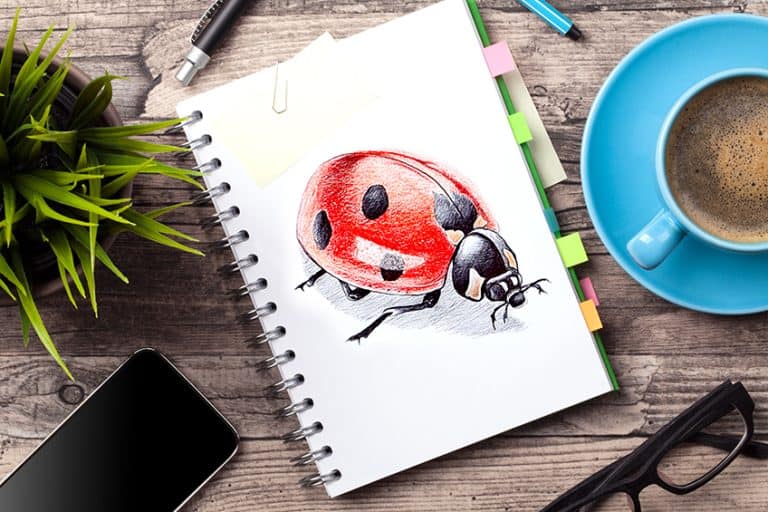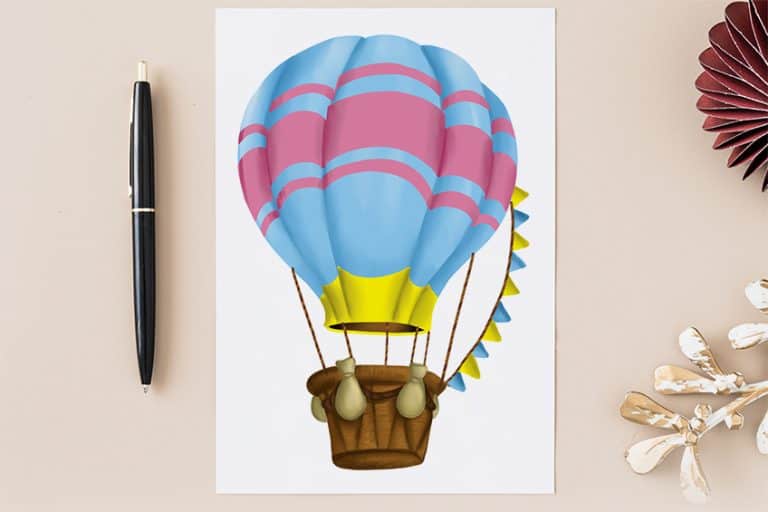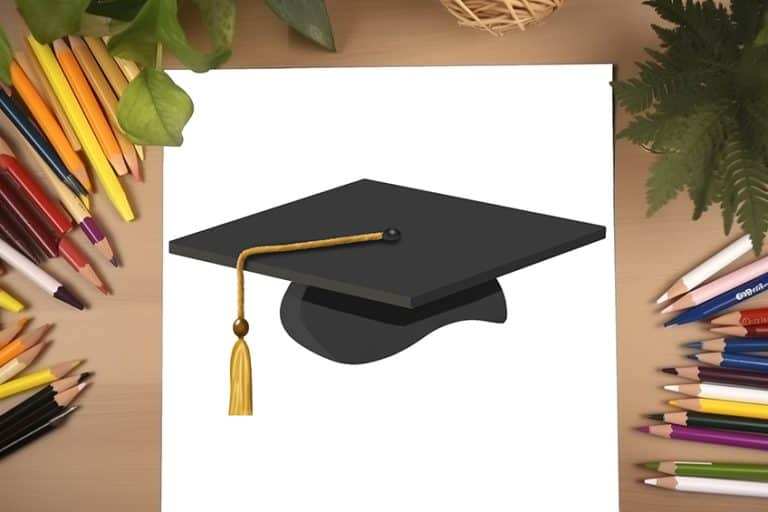How to Draw an Owl – An Owl Drawing Tutorial for Beginners
Drawing birds can be tricky. Each kind of bird is different, from its color to its structure and size. When it comes to drawing owls, not every owl is the same either. From barn owls to woodland owls, each one is unique. Owls have been the subject of mysticism for thousands of years, holding many different meanings for the different cultures across the globe. In light of this, it is no wonder that they have also been the subject of many an artwork! If you have been looking for a how-to guide on drawing these majestic birds, we will teach you how to draw an owl in this tutorial! You will soon be able to master this bird and include it in your works of art!
Introducing the Mystical Owl
For most people in the modern age, owls, along with their haughty hoots, bring wonder to the world. Throughout history, owls have had a myriad of symbolism. For some African cultures they were, and still are, omens of inconvenient circumstances, like death. Others, like native American tribes, believe the owl to be a guide to the afterlife. Many others see the owl as a bad omen. The Greeks believe owls to be their protector, blessed with a divine light that enables them to see in the dark. In fact, the Greeks would have an owl fly over their troops before they fought to bring about victory.
In total, there are 216 different kinds of owl species, which can be split up into two subcategories: true owls and barn owls. True owls have big, round faces and a beautiful, speckled collection of feathers. The picture below is a true owl, specifically the barking owl.

Step-by-Step Instructions for Owl Drawing
Now that we have established just how interesting these creatures are, we can dive right into the tutorial for how to draw owls. Play your favorite movie featuring an owl, perhaps Legend of the Guardians or one of the Harry Potter films. If your art station is not near a television, some soft music in the background and a few snacks at hand will be just as good to keep you company.
Step 1: Constructing the Owl’s Body
As with all our drawing tutorials, we will always guide you with the use of construction lines and shapes. These must be drawn using a 4H to 6H pencil, because they need to be light and easily erased. The body’s construction is a very simple step. You must draw an oval in the middle of your page, making sure that there is space for added detail around it.
The oval you draw should be fairly large because it will be a representation of the entire torso. It should also lean quite heavily to the right.

Step 2: Constructing the Owl’s Head
The owl’s head is a very interesting thing indeed. An owl appears to have no neck, and they can swivel their heads to 360 degrees without blinking an eye! For the construction of your owl drawing’s head, we ask you to draw a circle that crosses over the top of the oval you drew in the first step. The size of this circle is important – it should be only a little bit smaller than half the length of the oval.
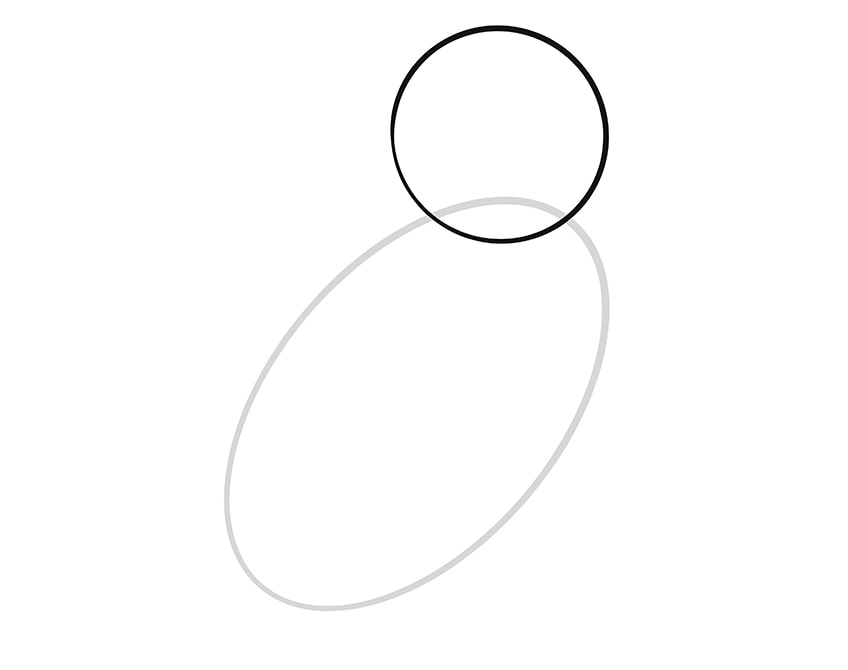
Step 3: Constructing the Owl’s Wing
This part might seem to be quite tricky at first, but if you follow our instructions, you will manage this perfectly. The wing’s construction shape is an oval, but more elongated than the first oval you drew for the body. It should be narrow enough to fit inside the first oval with space on either side, and it should stick out below the body’s construction oval.
You might start to see the hint of an abstract owl after this step – see our example below as a reference.

Step 4: Constructing the Owl’s Legs
This step might be slightly deceiving, but it offers the best guidance in getting the proportions of your owl drawing’s legs right. Another oval is needed for this, and you must place it at the bottom of the body’s oval (to the right of the wing). The left-hand side of the leg’s construction oval should link up with the intersection point where the wing and body ovals meet. The top of the leg’s construction oval should sit in-between the right-hand side of the wing and the rest of the body’s oval.
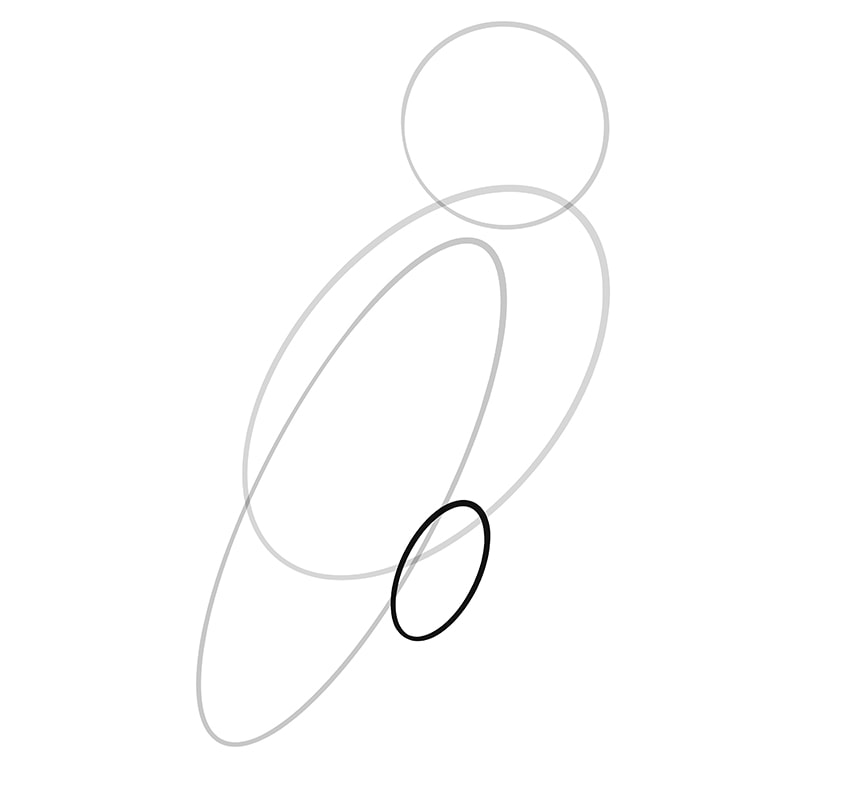
Step 5: Constructing the Owl’s Talons
Our tutorial is about how to draw owls realistically, which means that our owl drawing should have the right number of toes and talons. Our drawing will only show three of the owl’s toes, but there is usually a fourth toe that comes out from the back of the owl’s foot, meaning that it is often hidden from sight. One of the legs is hidden behind the other, which means that for now, it will look like the toes are coming out from the same foot.
When you start to add detail, the depth will make everything clear.
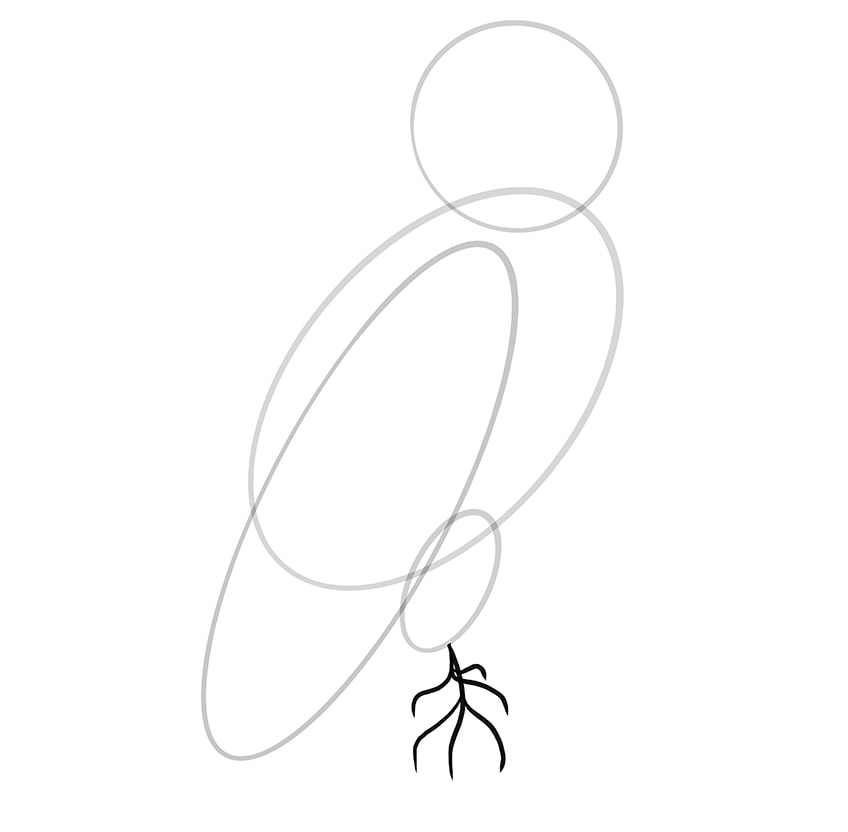
Start drawing the construction lines for the toes of the front foot by drawing a curved line extending to just below the wing’s construction oval. It should start right at the bottom of the oval, on the right-hand side. Next, you must add two smaller curvy lines forking out from the line you just drew, both ending at the same point.
For the foot behind the one you just drew, draw another line coming out from the same point as the first foot’s main line, and make it curve out to the left, towards the wing. Add two more toes reaching out to the right, crossing the line of the first foot.
Imagine that the owl is clinging to a tree stump, which means that the talons will curve inwards slightly.
Step 6: The Owl’s Face Construction
If you have ever drawn a face using construction lines, you will know that the best way to do it is by dividing the face into parts. This ensures maximum symmetry which, for an owl drawing, is of paramount importance.
Start by drawing a line that runs vertically through the middle of the owl’s face. If you measure the line you just drew, find the point that is just above the halfway point and draw a line that runs horizontally through the circle. Your next horizontal line must sit on the top of the body’s oval, and the last one should be just over the halfway point, between the other two horizontal lines.
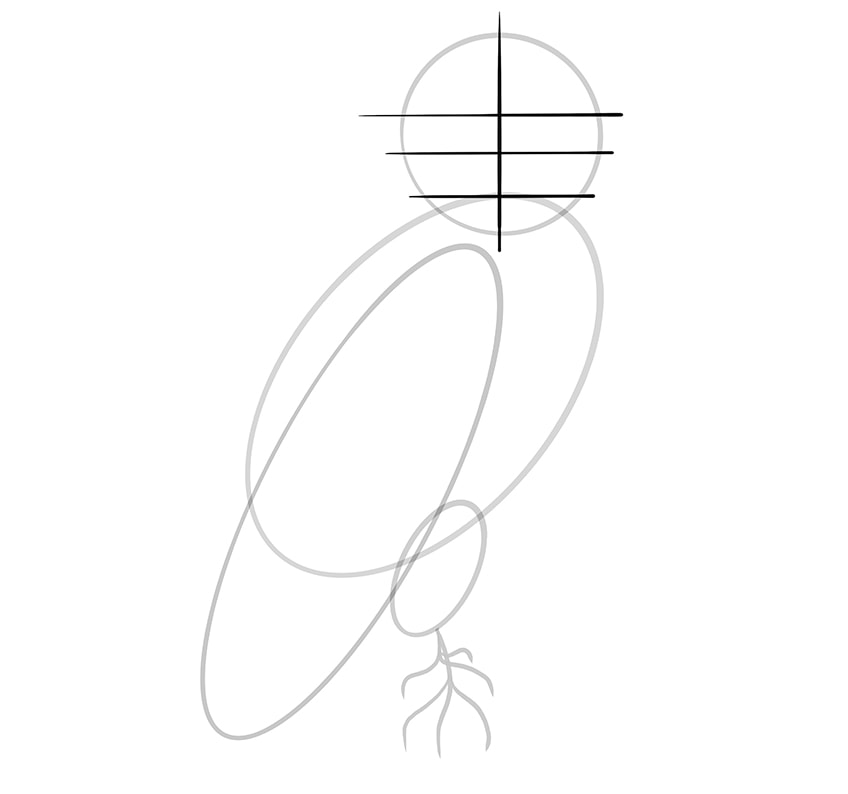
Step 7: Adding the Eyes and the Beak
This step will make use of the vertical line you drew in the previous step. Draw a small circle on either side of the line, ensuring that each circle crosses over halfway (although placed closer to the line than in the middle). Next, you must draw the owl’s beak, which will be in the shape of a “V”. Let the bottom point of the “V” shape start from the bottom horizontal line. The sides of the “V” should extend until just below the middle horizontal line. Draw two little dots for the beak’s nostrils at the same points at which the “V” ends.
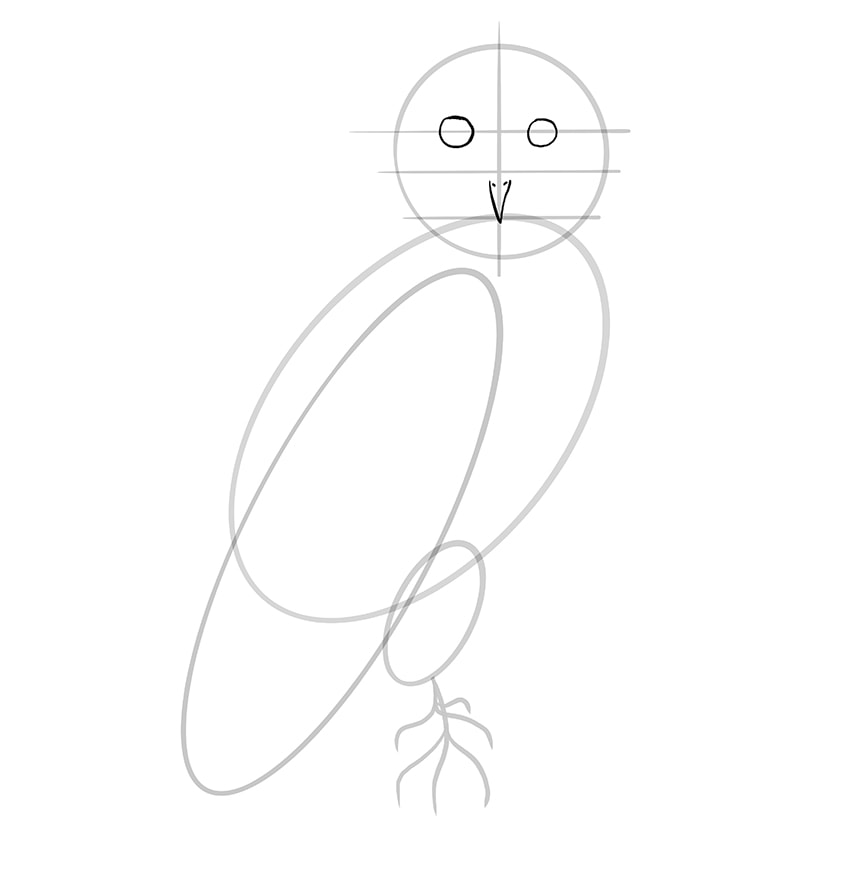
Step 8: Adding an Outline to Your Owl
For this part, we need to remind you that the construction lines are only there to guide your pencil, and as such, they should be followed loosely. Start from the middle horizontal symmetry line of the owl’s face (on your right) and draw a continuous line that goes up and left, following the shape of the circle until the other side of the head or middle symmetry line. There, you must curve the line out slightly, getting your pencil to gracefully link up with the body’s construction oval.
From there, you must now follow the wing’s construction oval down to the end of it, making it more pointed, and then continue following the wing’s shape until about three quarters into the oval for the body.
You can now return to the middle horizontal symmetry line to draw the right side of the owl’s body. Draw the outline going downwards and outwards, but only slightly, and let the line meet up with the right-hand side of the body’s construction oval. Continue following the oval’s shape until you get about halfway through the leg’s construction oval. Let the line bend in slightly to the left of this oval and then go downwards from there.

When you start with the legs, your outline must forgo the straight line and adopt a more feathery look. This can be done by drawing short little lines with loops that are either U- or V-shaped. Before you draw the feet, make sure that you have drawn a feathery line that indicates where the leg stops and the foot starts.
The toes can be outlined by drawing lines that run around each of the construction lines you drew in step 5, ensuring that you don’t forget to extend the lines to the talons. Make the toes curve out slightly before they connect with the talons to show how they are pressed into the stump the owl is clinging to.
Step 9: Detailing the Owl with Feathers
We are aware that the difference is quite vast between the example above and the example we have for this step. You do not need to be intimidated, however, because our tutorial is designed for both beginners and advanced drawers, so you will not struggle.
The feathering details added to the owl below were done with short lines that are drawn loosely.
Start with the owl’s face, and draw two rings of these little lines going in an outwards direction, one just next to the outline of the head and the other on the inside. These rings should be parallel to each other, with the inner ring being a bit smaller. You can then add some of the same lines around each eye and continue that pattern down towards the beak, leaving the middle almost empty. This detailing can continue past the owl’s beak until it blends with the two rings you made around the face.

For the next phase of feathering, you can continue with the detailing lines, but now with a mixture of long and short lines, as well as specks. These must go in a downwards direction, curving slightly with the shape of the owl’s body. A good suggestion would be to start at the bottom of the head, going from one side to the other, keeping with the rounded shape.
For the owl’s wing, bigger feathers must be added.
Do this by completing one row of feathers before you start with the next. The feathers must be in the shape of an elongated “V” shape, but the point can be slightly rounded and curved to the left on the right-hand side of each feather. This will make it look like each feather overlaps the other. The feathers nearer to the bottom of the wing must be slightly longer and leaning to the left. You can then add a mixture of long and short detailing lines as you did with the body so as to give a more realistic ruffle to the feathers.
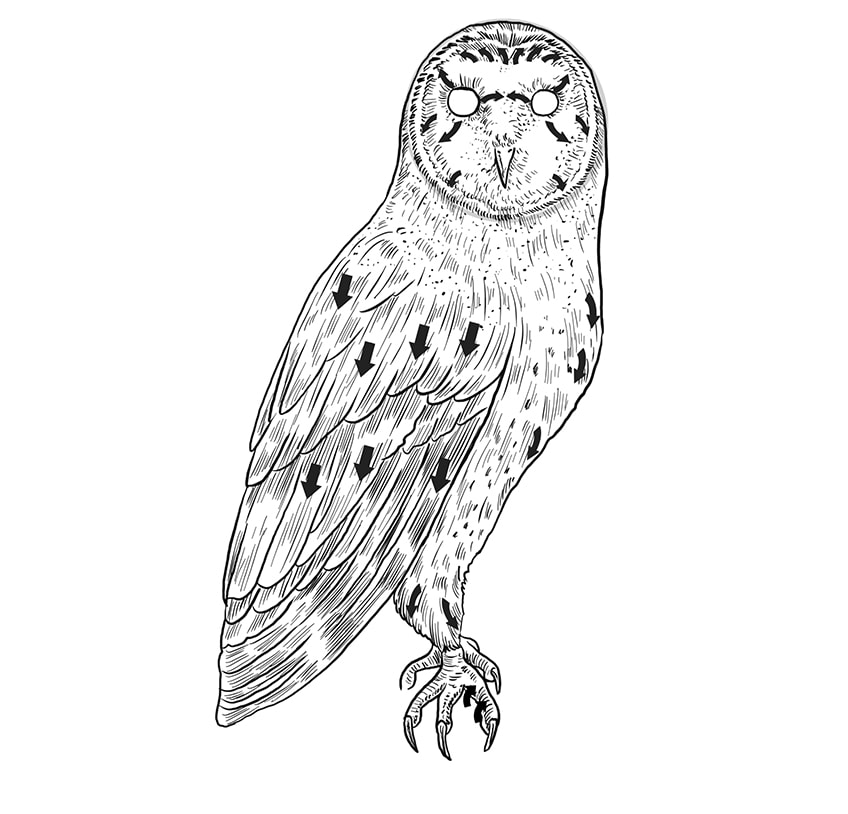
Step 10: Adding Life to the Owl’s Eyes
An owl’s eyes are the most mysterious part about them. They are large and glassy and seem to stare right into your soul. To replicate this effect, color them in black, leaving a perimeter gap uncolored so that it is white. The coloring should not be 100%, because you must leave some flecks of white to act as reflections. In one of the eyes – we chose the left in our example – we added a slightly shaded patch of white to give it that glassy look.
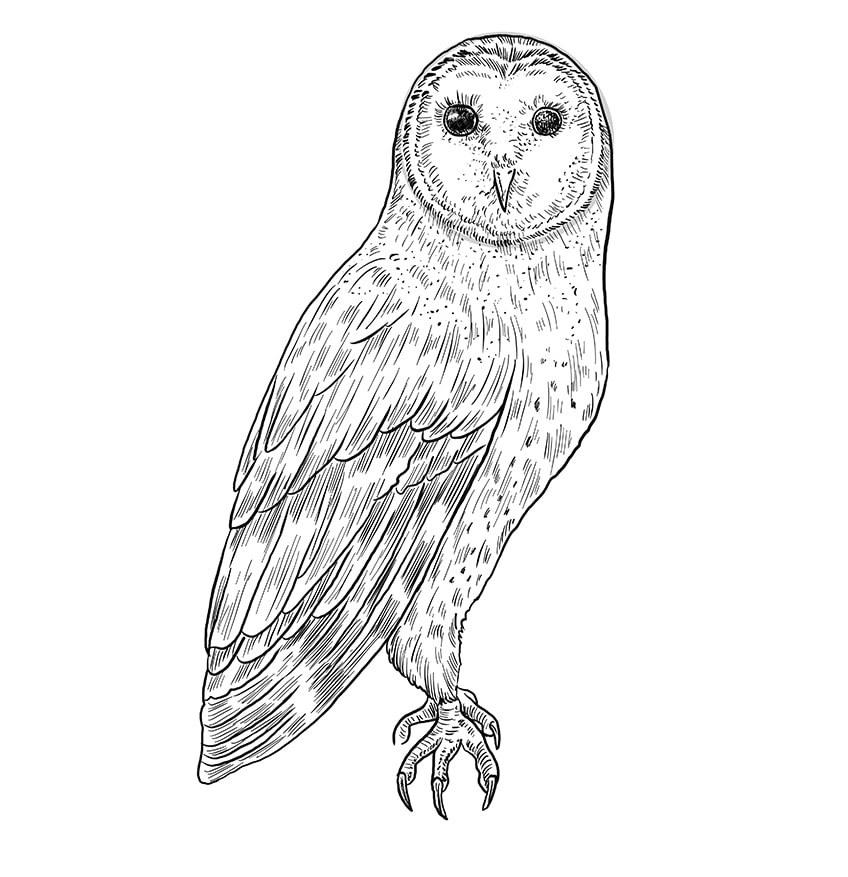
Step 11: Give It a Stump to Stand On
We did mention earlier when you were constructing the owl’s toes and talons that it will be perched on the stump of a tree. You can, of course, choose what it is standing on – it does not need to be a tree stump specifically.
So, if you would like to draw the owl perched on the arm of the Greek goddess Athena, for instance, be our guest. Just make sure that the toes and talons look natural in their connection.
If you do draw the stump, draw a circle of sorts, with the line going behind the toes of the owl and continuing going up and around (yet behind) the owl’s foot. This shows the surface of the stump. Draw some detailing lines going in a circular direction for a real emphasis. Then, draw a line coming down from the stump’s surface and add some detailing lines going in a downwards direction for the bark of the tree stump.
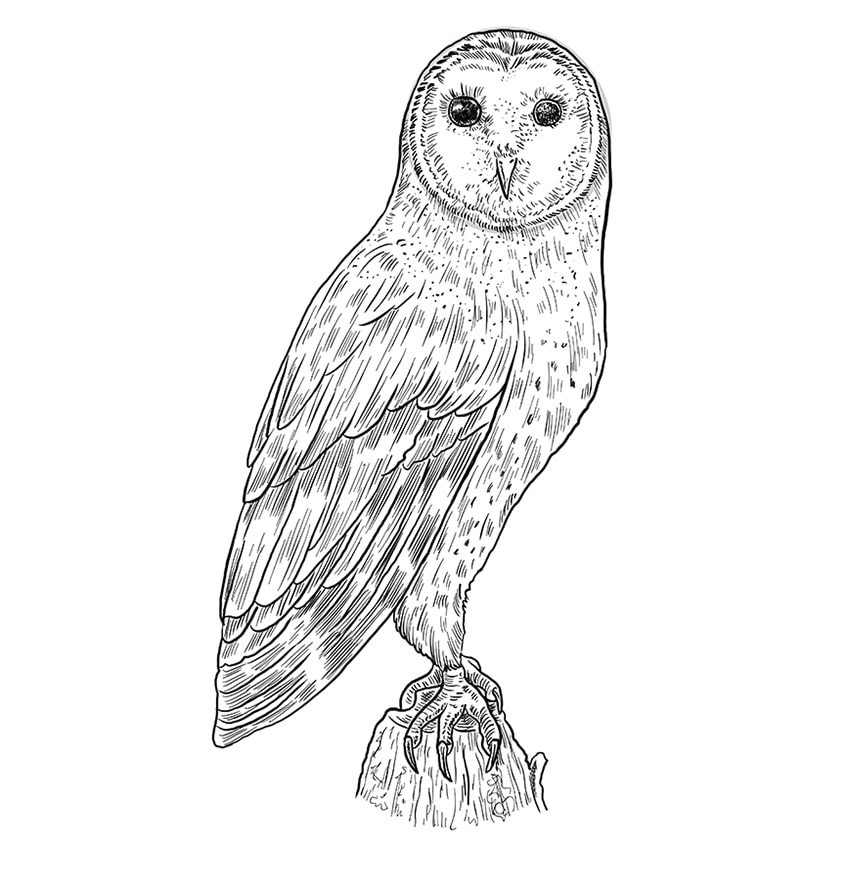
Step 12: Shading and Blending
This step will truly bring your owl to life! Use an earbud if you have one handy, or simply use your pencil and manually apply the shading to your owl. Add extra shading on the wings, aiming for the bottom of each feather. Finish this step off by adding some shading to each fleck of the feather-detailing lines. For this owl, there is no shading required on the face.
If you would like to go the extra mile with your owl drawing, you can also get out a white pencil and add some highlights to the feathers on the wing. This will make them look glossy, almost as if they will spread out at any moment.
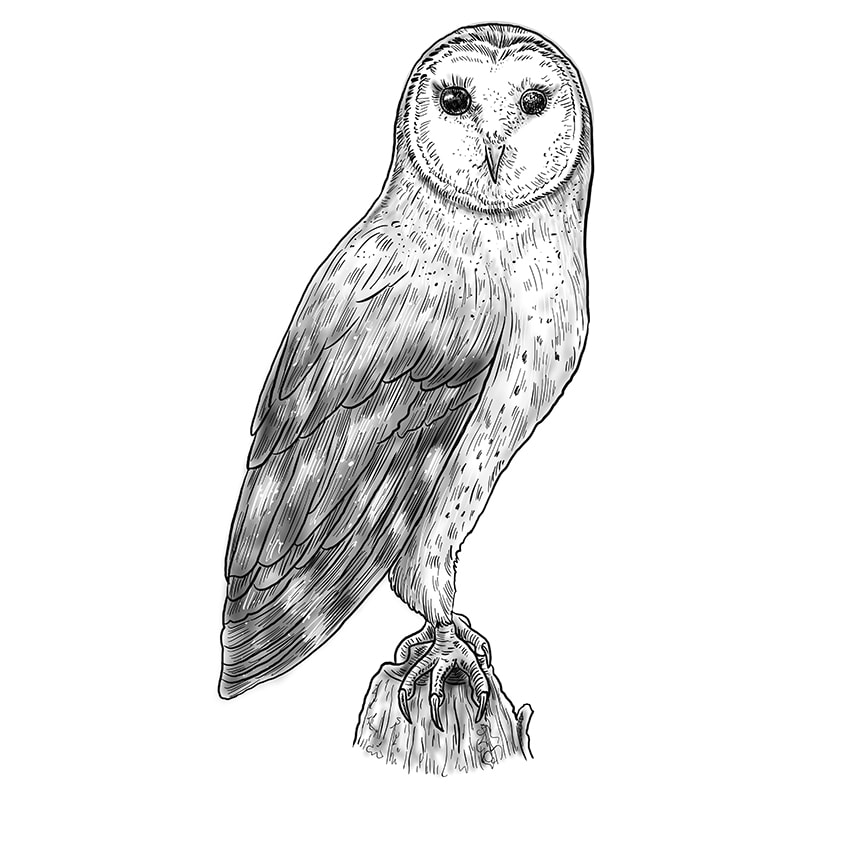
We salute you for completing this owl drawing tutorial and we hope it was as satisfying for you as it was for us. With this new skill you have gained, you can start learning to adapt these beautiful birds into your artworks whenever and however you wish.
Frequently Asked Questions
Will This Tutorial Explain How to Draw an Owl?
The sole purpose of this tutorial is to teach you how to draw an owl realistically. So, yes, this tutorial will explain how.
Are Construction Lines Necessary for Owl Drawing?
The construction lines are only lightly drawn, meaning that they will not be there in your final product. They are necessary to help you achieve the correct proportions for your owl drawing.
How Long Will This Owl Drawing Take?
This is a quick tutorial that should take you a maximum of half an hour. However, if you have not drawn in a while or if you are new to this hobby, you might take a bit longer.
Are There Any Extra Tools or Materials Needed for This Owl Drawing Tutorial?
The only tools you will need are the choice of medium you are drawing your picture with. Pencils, pens, crayons, or even your tablet. An eraser and some earbuds for blending might also be handy.
Matthew Matthysen is an educated multidisciplinary artist and illustrator. He successfully completed his art degree at the University of Witwatersrand in South Africa, majoring in art history and contemporary drawing. The focus of his thesis was to explore the philosophical implications of the macro and micro-universe on the human experience. Matthew uses diverse media, such as written and hands-on components, to explore various approaches that are on the border between philosophy and science.
Matthew organized various exhibitions before and during his years as a student and is still passionate about doing so today. He currently works as a freelance artist and writer in various fields. He also has a permanent position at a renowned online gallery (ArtGazette) where he produces various works on commission. As a freelance artist, he creates several series and successfully sells them to galleries and collectors. He loves to use his work and skills in various fields of interest.
Matthew has been creating drawing and painting tutorials since the relaunch in 2020. Through his involvement with artincontext.org, he has been able to deepen his knowledge of various painting mediums. For example, watercolor techniques, calligraphy and lately digital drawing, which is becoming more and more popular.
Learn more about Matthew Matthysen and the Art in Context Team.




